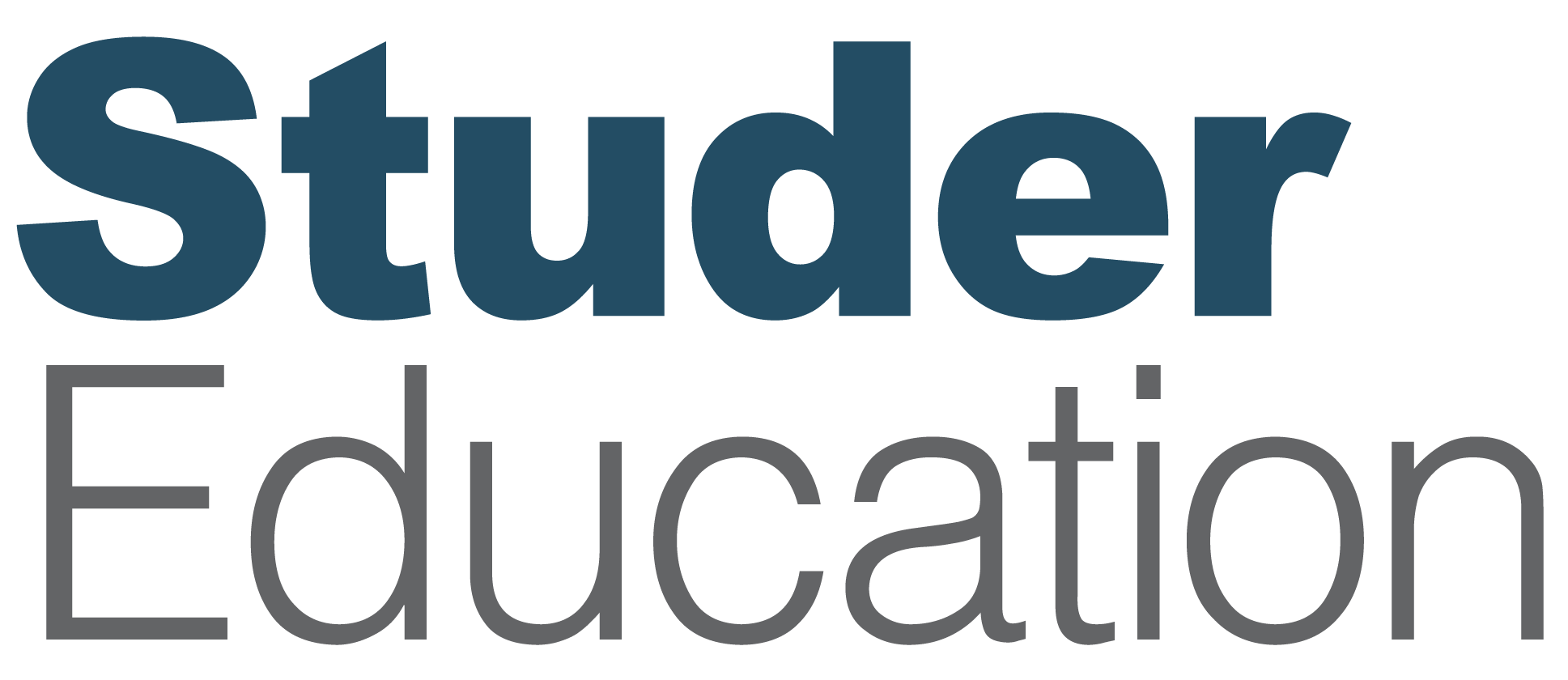
Join Dr. Janet Pilcher for a special conversation with Dr. Chris Hartley, Deputy Executive Director at the California Collaborative for Educational Excellence. Together they discuss the evolving educational priorities from both state and national perspectives. They also dig into California’s approach in building coherence around the services provided to all districts in California. Listen now to hear how Dr. Hartley says California is working to break down silos and showcase exemplar practices.
Recommended Resources
Latest Episodes
Chris Hartley: We talk about what it takes to make a school day happen. From the bus driver who’s the first to see the student and the last to drop them off, to the cafeteria, to teachers, to paraprofessionals, to our leaders, people make programs, right? And our work happens at the speed of trust.
[Intro music plays in background]
Introduction
Janet Pilcher: Hello everyone, welcome to today’s Accelerate Your Performance podcast. I’m your host Janet Pilcher. As always, I thank you for tuning in this week. And it’s with great pleasure that I welcome back to our show, Dr. Chris Hartley, who is the Deputy Executive Director at the California Collaborative for Educational Excellence, also known as CCEE.
Chris and I have been connected over the years, and I am so excited to bring him onto the show today to really talk about leadership, but to talk more specifically about the trends and issues that are out there in front of us and how he and his expertise can really provide great insight for us. He has been a superintendent and principal and has many, many years of experience in education, and now he leads the state collaborative.
Our interview today will focus on the role of the CCEE and how it helps school districts across California. You’ll also hear how the work we do at Studer Education aligns with continuous improvement that districts are engaging in across the state and we have a number of partner districts across the state of California. And Chris has been a partner with us in his former superintendency.
So I’m just excited to have Chris to join us today. So let’s jump right in.
Interview
Janet Pilcher: It’s with great pleasure that I welcome back to our show today Chris Hartley. Chris, thanks for being with us again today.
Chris Hartley: Oh, absolutely my pleasure. It’s good to see you it’s been a while. I think it’s been several months since the last time you and I had a chance to talk, so it’s great to be here.
Janet Pilcher: It has been, and it’s always great to have you on our show, getting your perspective, not only from the state but how your state really looks at the state perspective but also aligned to our national perspective of education, and so just wanted to have a conversation related to that. so let’s, let’s just jump right in.
As you think about your past experiences in a county office to your Executive Director experience with the California Collaborative for Educational Excellence, what are some of the newer priorities? We’ve talked about some of the priorities before, but what are some of the new priorities you’re seeing, and how does that affect your work statewide?
Chris Hartley: So that’s a really, it’s a really great question to start off with. I think foundational to kind of talking about, like, my newer priorities as regards to our organizational newer priorities too is to think like the consistency of our work as we go through our jobs. So from the district level, Janet, as you just mentioned to the county level. I worked as a superintendent supporting 31 districts to now in a state position.
You know the key part here is that the core mission still stayed the same. You know that is essentially to ensure that all students get a high quality and equitable education, you know, and I think that sometimes you can—So when you talk about state and national perspectives, gosh staying grounded in that philosophy that we’re students, student first is so important.
The further you get from the school site, sometimes you have days where you’re like, “why am I doing this again?” Right? So I just want to start with that, that no matter what the priorities are, that that’s the core mission, you know, is ensure all students are having high quality experience and that we’re improving outcomes.
Um, but when I think about current priorities, the complexity of the supports and services that are just simply available is hard to manage. There’s a lot of support out there. Nationally, statewide, and through a variety of different organizations.
So one of our current priorities that we’ve really taken on is how do we build coherence at the state level, just around the services that are universally available to any district in the state who also have access to targeted supports, you know that can complement those universal systems, and then certainly can tap into intensive supports where that’s important? So that’s a very important piece.
Along the lines of having all the support providers, a big priority for us is to continue to strengthen the interdependency between organizations that are offering the support. So that we’re not, that we’re not living in silos, but rather lifting up exemplar practices across state partners, across county offices of education, across lead agencies, and certainly our districts, putting them out in front to share their exemplar practices. There’s a lot of work that we’re doing in this area by really focusing on how do we coordinate what’s out there? How do we develop the collaboration and the relationships between agencies so that we can actually integrate.
Janet Pilcher: Yeah.
Chris Hartley: So, it’s a very big priority for us Janet, statewide, and I would imagine that’s that’s got, you know, it’s got some national teeth in it too.
Janet Pilcher: Mmmhmm. Because, Chris, there’s so much out there, right? That’s what you’re saying; there’s so many things out there that for districts, it’s hard to get their hands on how they’re interconnected with each other, or what, how, you know how they make the best decisions to provide the support. Is that what I’m hearing?
Chris Hartley: Yeah, that’s a big part of it, and you know, in California we have 58 counties. And if you’ve been in one county in California, you’ve been in one county in California. So for instance, Janet, I as we were just talking before this show, I’m up here into the far rural northwest and Humboldt County near the Oregon border. Our reality is very different than San Bernardino or where I’m going to go on Sunday, Sacramento. So, you know, but county offices, the way the structure is, they’re a direct conduit to the districts that they serve. So that’s, our system is scaffolded that way.
A big focus for our work is partnering with folks like our county offices to ensure we have coordination of the services, but also what I think is foundational to all the work, is just how we are sustaining continuous improvement practices. And keeping that theme alive across state county districts and school systems.
Janet Pilcher: Yeah.
Chris Hartley: One of the things that I, we just had a meeting a couple of weeks ago and realize the turnover rate of professionals and experts that have been training folks in continuous improvement has been pretty large. So one of the things we realized in our county offices across the state is a lot of, there’s a lot of new folks to the field of being a train the trainer of continuous improvement. So we have to constantly provide universal support in that area and not just assume that we have everybody in place to support districts with good continuous improvement practices.
Janet Pilcher: Yeah, so, speak a little bit more about that, Chris. You know, when you’re looking at continuous improvement and good continuous improvement practices and the need for districts to really have that type of support, what’s at the front and center of your mind as you’re thinking about the best ways that districts can be supported with those types of services?
Chris Hartley: You know, and it’s a great question and part of the answer is it depends. It depends on the type of district, so in California, for instance, we’ll have a third of our districts are considered small/rural. People might not realize that about California, but out of nearly a thousand districts, you know, we’ve got a third that are either have a superintendent/principal position or a superintendent with a very small staff trying to move everything, you know, from one leadership position to massively large districts like Los Angeles and Sacramento and Stockton and etc.
So what does continuous improvement mean for, kind of depends on the district, but again we focus on really trying to support the county offices and being able to leverage their support to the districts that they serve.
Janet Pilcher: Yeah.
Chris Hartley: And so continuous, for us, that means how do we help our lead agencies? So as an organization at the CCEE, we work with folks like our geographic lead agencies. And so we helped them kind of conceptualize how can they support their counties that they serve, right? And so one of the things they came up with was a differentiated assistance 101 workshop.
And so in California, when you enter differentiated assistance as a district, you are able to receive some very specific support from your county office. And so what we try to build up was how does the county offices, how do they support their own development of continuous improvement training within their structure?
Janet Pilcher: Mmmhmm.
Chris Hartley: Instead of adding another service. How do we utilize the structure and the system that’s there to build the services within?
Janet Pilcher: Yeah.
Chris Hartley: That’s a problem we have, right Janet, across the country? You know, we will try to approach a problem with a new solution versus using the system that’s already in place.
Janet Pilcher: Yes, exactly. And that’s really what we’re trying to get to is, you know, I think in, in our work, when we talk about it, you know we’re trying to remove people away from just making decisions about the accelerators, just like buying this—
Chris Hartley: Yes.
Janet Pilcher: —to get an outcome and buying that to get to an outcome and buying something else to get to an outcome to really looking at, you know, we always say, we don’t really care what you purchase. You could purchase one of 100 things in order to get to an outcome. But the way that you make the decision and the outcomes you’re trying to achieve and the way you execute to those outcomes regardless of what you purchase, so to speak, as your tool or your curriculum or program, you know becomes the essential aspect of how you determine whether or not you’re going to be successful or not. Right? It’s that system and execution of that system that really reinforces.
Chris Hartley: Yeah, well said, Janet. You know so when we think about, so in systems, we do, we do have some new priorities in very specific areas, so I want to make sure I mention like, our team is going to be, we just kind of set our stage for the upcoming year just like everybody else is. Well schools are trying to just get through the end of the year right now. But they’re also planning for next year. They’ve been doing that for a long time, and in California we’re working through the financial situation, getting our budget squared away, and doing all that.
But for our team, some real specific areas I think are important to mention will be looking at providing more targeted help in special education areas across every district in the state. They’re working through the dynamics of that. We want to continue pushing leadership development to support our leaders, to retain our leaders, develop and help those encourage those to enter the field of leadership. And we have an ex— community engagement initiative, and folks can access the specifics of that on our website, but that’s really transitioning to the from a 1.0 model to a 2.0, and it’s getting great success.
We also have a large demand to increase our support for direct technical assistance. And so our team’s working hard on that, and then I think all of us should be working on how do we develop a younger workforce?
Janet Pilcher: Mmmhmm. Yes.
Chris Hartley: How do we help teacher preparations and support ongoing professional learning for our teaching staffs and all those folks?
Janet Pilcher: Yeah
Chris Hartley: To kind of put out there as far as newer priorities. Those are always priorities, but they’re really, we’re really going to get lasered in on some of those.
Janet Pilcher: Yeah, but really keep, I mean those are the key areas you know, and just, you know, our work and you know how we partnered with school districts and county offices along the way. If we’re serving organizations really well and knowing what those types of priorities are, you know, how could we be a good partner? What would be the best thing that we could do to make sure that we’re on target with being good partners to districts and off— county offices for example?
Chris Hartley: You know, that’s a great question. I think really helping your partners and folks that you’re collaborating with to be able to focus through all of the debris and hone in on what’s important and more importantly, Janet, to develop some systems around what’s important so that it’s not random acts of, we say random acts of kindness, but I think we also have random acts of solutionitis. I don’t know what it is, but educators talk about that frequently. Like, “oh yeah, we heard that idea 30 years ago. That’s a great one.”
Janet Pilcher: [laughs]
Chris Hartley: We recycle our great ideas. If you’ve talked to any veteran teacher, I can remember as a brand new principal, I was real excited about how we were revamping courses of study.
And this old auto shop teacher, he was in his literally 32nd year. He’s an amazing man, Mr. Backman. And he came up and he’s like,” hey, I want to show you something.” And he literally pulled a file out of his desk in his auto shop. And he showed me this format [laughs] that was the same thing we were launching.
Janet Pilcher: [laughs]
Chris Hartley: And he goes, “yeah, we did this like 20 years ago.” And I was, oh my gosh, what a learning experience for just a young, ayoung principal to be able to do that.
Janet Pilcher: Yeah.
Chris Hartley: So I think helping people really be grounded in what’s important and to develop systems and structures around, I mean, you all talk about you have a people first philosophy, right?
Janet Pilcher: Mmmhmm.
Chris Hartley: And you have a philosophy that aligns behaviors to goals to systems to get to outcomes. I think really being solid, rock solid grounded in that, amidst all the chaos of the leaders you’re supporting, gives them and gives leaders a place to fill grounded and led.
Janet Pilcher: Yes.
Chris Hartley: Without having to think of that strategy alone.
Janet Pilcher: Yes. You know, it’s interesting, Chris, because last week, I interviewed a principal in Oxford School District, Mississippi, and a teacher. And it was delightful, you know, just with the boots on the ground of the conversation that we had. And the systems, they’re not doing anything that different in what they normally do in terms of good instruction and what they know. But the systems that they talked about and the alignment and how they could talk about how what they do connects to the district, and they could see it, and the teacher was talking about, “I’m not just here teaching my students, but I’m here because I’m looking at what we’re trying to achieve holistically and helping each student achieve that one day at a time.”
And the alignment piece and just listening to them talk, their excitement in that was, it was life-changing for them in their profession because now they talked about it as just being the way they do their work. Like now that’s just what we do. We come to work, and we do that and e, we feel good about it, we’re happy. You know, they talked about, now we can push ourselves beyond what we thought because we, you know, have that structure, that system in place to help us do that. And I thought to myself, you know, gosh, if we could take that, we could take that principal and that teacher and just replicate it all over the country, you know, we would really be a different profession. I just, hats off to that principal and teacher.
And sometimes we’re looking at these large, seems like people think of these large issues and transformation of change, but sometimes it’s just that simple, not easy to do, but just that simple in terms of the way we think about it, if that makes sense. Does that, am I making sense to you there?
Chris Hartley: You are making great sense. And I think just validating what I was, I think you articulated what I was trying to say better. [laughs]
Janet Pilcher: Not at all. You made me think about that more.
Chris Hartley: Yeah. There’s so much for our leaders to sort through from the district level to like the site principal to teacher leadership.
Janet Pilcher: Yes
Chris Hartley: Critical to all staff being a part of this, being part of the structure. So helping districts is which is what you all did for me at the county level to just be able to focus in on, okay, this is, we got to align these things and we got to create some structures that are consistent that everybody understands the same way. Just like good classroom teaching.
Janet Pilcher: Yeah, it is. [laughs] It really is.
Chris Hartley: Good classroom management. You know, my students understood what to expect. I understood what I was trying to get, and we developed that rapport, and it was a piece of cake.
Janet Pilcher: Yes, it is. It’s so funny. It’s like, you remember what we did as teachers? If we just kind of take that up to the leadership level and just remember that.
Chris Hartley: Yeah, sometimes it’s just see ball, hit ball. Let’s just keep it simple.
Janet Pilcher: Yeah. Exactly. So let’s talk a little bit. Just take it up a little bit. And as you look at important issues that you’re facing, looking at it in conversations at the state level and looking at education today, what are those national perspectives and what are those issues that are really driving leaders to have to manage through some of the changes that are occurring or manage through some of the external factors, for example, that are coming through their way?
Chris Hartley: So kind of what are some of the most important things from a national perspective?
Janet Pilcher: Please.
Chris Hartley: Yeah. I think, I think it’s pretty clear that one of the critical issues continues to be the sustainability, Janet, you know, the cultivation of a dynamic educator workforce. I mentioned that just a little bit ago, but I’m going to come back to that.
Janet Pilcher: Mmmhmm.
Chris Hartley: So without a dynamic workforce, how are we going to be dynamic providers of education and supporting children and the youth that we serve?
Janet Pilcher: So good.
Chris Hartley: I say children and youth, particularly because now in California, we have a UPK through K-12. We don’t have a K-12 system anymore. We have a UPK through K-12 system. So we essentially have added a grade level the first time in 100 years. So that’s really important when it comes to think about aligning that and adding, and doing the work of adding a grade level to our schools.
The workforce piece is critical to that. One of our partners, you, I have a sense of humor, at least I think I do.
Janet Pilcher: [laughs]
Chris Hartley: He says, we need bodies and potties. [laughs]
Janet Pilcher: That’s right. [laughs]
Chris Hartley: So, you know, you say, “okay, we’re adding UPKs.” Great. We love it. The philosophy is fantastic. Let’s get involved with our children as soon as possible and start those partnerships as soon as possible.
But you need facilities. You need bathrooms. You need classrooms. You need people, right? That just can be scaffolded across the system. So the sustainability of a dynamic workforce is important. And sustained to me means we have to retain the folks that we get that are entering the field.
We’re all very focused on recruitment, which we still need to do, but we have to make sure that we have an environment that people want to work in.
Janet Pilcher: Yes.
Chris Hartley: So how do we inspire and create opportunities for our young people to view education as a rewarding career that they’re going to do for 30 years plus and retire from? Like a lot of the colleagues that I see now retiring, you know, that are in my field of experience. They’ve been doing this for an entire career.
So how do we have strong teacher and leadership prep programs? You know, it all goes to me together to, again, the attention around retaining and celebrating the work of educators. And I think that that’s an important issue of enhancing the national dialogue around.
Janet Pilcher: Yeah.
Janet Pilcher: You can collectively do that across all of our states. I don’t think we should be doing that in silos as states either.
Janet Pilcher: No.
Janet Pilcher: It needs to be a national conversation and place of action.
Janet Pilcher: Yes, I love that, Chris. And I mean, that’s something to really push forward because you don’t naturally hear that kind of dialogue that’s occurring across the state. I mean, people kind of intuitively know it, but just to really position ourselves to say “this is really one of the most important parts is building a dynamic workforce, sustaining that workforce, taking care of the people who enter our field, helping them be proud of what they do, helping people be proud of what they do.” It’s just so critical.
Chris Hartley: Yeah, I agree, Janet. And you know, earlier you talked about like how Studer can help districts kind of hone in on best practices. I also think we need to, as a nation, think about getting back to the basics and having that relentless focus truly around teaching and learning.
I think we all, you know, we’re all paying attention to the news. Our states all experience different things, but I look at, I do some support for governing boards and some school board trainings. And my goodness, you know, I see the political issues that our leadership, educators, school boards are working through, it’s pulls them so far away from the conversations of teaching and learning.
Janet Pilcher: Yes.
Chris Hartley: You know, I imagine this is a national issue.
Janet Pilcher: Yes.
Chris Hartley: So how do we help ground ourselves—
Janet Pilcher: Yeah.
Chris Hartley: —into talking about, I mean, the political issues are there, right? Our schools are a platform for those discussions. But how do we somehow get that conversation pointed back to students at all costs?
Janet Pilcher: Yeah, so good. I mean, that’s what we can control. You know, we can’t control all the external factors, we can’t control what you’ve just, what you’ve just talked about with teaching and learning and building the dynamic workforce.
So as we close today, you know, as you think about, you know, I always say to people, I’m not at the beginning of my career. You know, I’m three decades into it. And, you know, think about. And you have a lot of experience as you look back over from your beginning of moving into education to what you’re doing today. And just reflecting on what lessons have you learned as a leader that you can carry with you and provide our audience with some advice on what does it mean to be a good leader? And how do we carry that forward as we move forward?
Chris Hartley: Oh, you have the best questions. You know, this is a big question, and you might answer it differently from one day to the next. But I think at the core of it for me, when I think back to beginning as a teacher in alternative programs, you know, it’s just the importance of supporting others and understanding the power of having joy and a purpose in life.
You know, so I spent my time with high schoolers, and I just wanted them to have choice when they graduated, just to have options, not pushing an agenda, not pushing a specific direction, but just to find the power of joy in their life and to be inspired for that next purpose, that next phase was always a core belief, and it still is for me.
And working with those kiddos, I learned quickly too to recognize the, and value the importance of resiliency in our kiddos and our families and our youth and those people that are around us and to celebrate that resiliency, and, and don’t underestimate the human capacity to overcome, you know, intense obstacles. And to be there and to be that consistent force for them, that one place they know what to expect, and they know what they’re going to get when they show up at whatever time and they leave at whatever time, you know, that, that’s critical, and I think that’s still good for leadership too.
Janet Pilcher: Yes.
Chris Hartley: I think it crosses over. And then I think the last thing is just the importance of an entire school organization and community has on the development of student success, you know, we talk about what it takes to make a school day happen from the bus driver who’s the first to see the student and the last to drop them off, to the cafeteria, to teachers, to paraprofessionals, to our leaders, and that, you know, we are, people make programs, right? And our work happens at the speed of trust. And so having those things in place that allow that to flourish, like the work that I’ve done with you all, aligning behaviors, to practices, to goals, to having some system processes, so that ultimately, Janet, you know, student outcomes and achievement and engagement will improve.
Janet Pilcher: Yes.
Chris Hartley: Those come to mind. What a great question. Thank you.
Janet Pilcher: Yes, absolutely. Well, and thank you for just your insights. As I mentioned when we started, Chris, I love to just pull in a state and national perspective and find somebody who has great expertise and provides the thoughtfulness that’s needed in our profession. You know, not looking at it from the standpoint of just always positioning ourselves politically, but when we get down to what we need to do, you know, what’s our core and what do we push from that state and national agenda that’s the core of what we know that we do. And that’s what you do for your state. You know, that’s what you’ve contributed to us as well in terms of a partnership and advice all these years. So thank you very much for that.
Chris Hartley: Oh, my pleasure. Fantastic. Thanks for the opportunity.
Conclusion
[Outro music plays in the background.]
Janet Pilcher: Thank you for listening today as Chris shared CCCE’s mission to support and improve districts across California. As we well know, the right partnerships are foundational in driving positive outcomes for our students.
If you enjoyed this episode, please consider hopping into Apple podcasts or Spotify and leaving us a five-star review. It sure would mean a lot to me and love to continue to build the connection and network of wonderful educational leaders across the country.
As always, I thank you for tuning into this episode of Accelerate Your Performance, and I look forward to connecting with you next time as we continue to focus on the Nine Principles Framework so that we can be our best at work. Have a great week, everyone.








